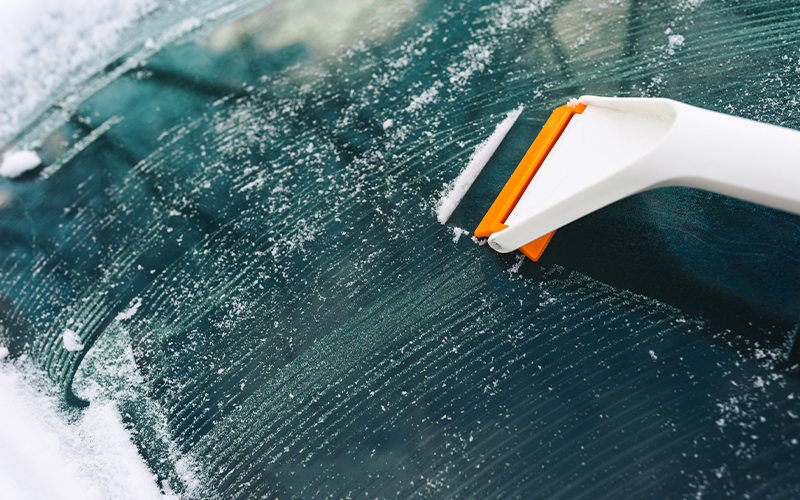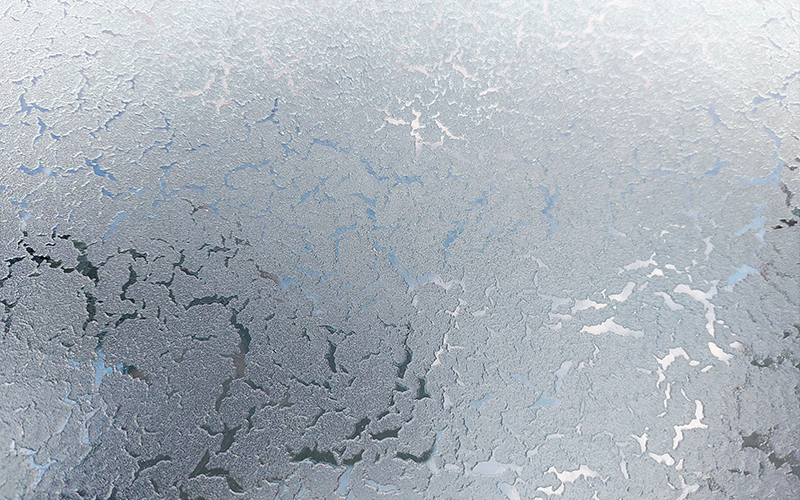How to Properly Defrost Your Van's Windscreen

In the winter months, it’s often a daily challenge to deal with a frosted windscreen before you set off on your journeys.
Properly defrosting your van's windscreen is essential for clear visibility and safe driving.
Continue reading to learn how to defrost your van windscreen safely and efficiently, and, importantly, what not to do!
Table of Contents
Check to see if your van’s windscreen is frozen
Step-by-step guide to defrosting your van’s windscreen
How to prevent your van’s windscreen from icing or frosting over
Check to see if your van’s windscreen is frozen
To determine whether you need to defrost your van’s windscreen, you must first check whether it is frozen over. Sometimes, your van windscreen may appear frozen at first glance and it is actually just condensation.
Take a close look for visible frost or ice on the surface of your windscreen. If you’re still unsure, touch the windscreen – if it feels extremely cold or there is a layer of ice, it is most likely frozen.
Check your wiper blades; if they appear stuck or aren’t moving smoothly, ice may have built up underneath them.
If you find your van windscreen is frozen over, you must defrost it before you set off driving.
Additionally, don’t forget to check your side mirrors. Ice or frost on these can significantly affect visibility and should be addressed before driving.
Step-by-step guide to defrosting your van’s windscreen
If you’re in a rush in the morning, it can be a pain to have to defrost your van windscreen. However, remember you must do so thoroughly before you begin driving. Driving with snow and ice on your van windscreen could result in a substantial fine – and also compromises your safety and the safety of others.
So, what is the best way to defrost a windscreen? Follow our step-by-step process below.
1.Ensure your wipers are turned off
If they are switched on, they could become damaged as they try to move past the snow and ice.
2.Start the engine and air-con
Turn your van engine on and angle the heat vent towards the windscreen.
Turn on the rear window heater and heated mirrors if your van has them.
Start your air-con. It may seem strange to blast cool air, but it helps to remove condensation. You can then gradually increase the temperature to make it warmer, as the air dries out.
3.Clear your van’s windscreen
Sweep away any snow with a brush – be sure to clear it from the roof of your van to prevent it from falling onto your windscreen as you drive.
Spray deicer over your van windscreen if you have some. This is the quickest way to defrost your windscreen.
Use a plastic ice scraper to remove any compacted areas.
4. You’re good to go
Once the inside and outside of your van windscreen is all clear, you are safe to begin driving.

The dos and don'ts of de-icing your van’s windscreen
There are many internet hacks that claim to be the ‘best way to de-ice a windscreen’ but be careful before you put them into practice. Some hacks could actually damage or break your van windscreen. Read on for your dos and don’ts.
Do:
- Always remove the bulk of the snow or ice with a brush or plastic scraper.
- Turn on your air conditioning. This will help remove the moisture in the air and will speed up the defrosting process. You can gradually increase the heat to make the inside of your van warmer once the air has dried out.
- Use deicer – this is the quickest and most effective way to defrost the ice. You can keep a bottle in your van too as it shouldn't begin to freeze until around -50�C.
- Be patient. Properly de-icing your van can take 5-10 minutes.
Don’t:
- Use a key or anything metal to scrape the ice away – this could damage the glass.
- Turn the air recirculation on – this will pull air from outside in and will cause more condensation.
- Use water or an external heat source to warm the windscreen faster. The sudden change in temperature could cause cracking.
How to prevent your van’s windscreen from icing or frosting over
Preventing your van’s windscreen from frosting over in the first place could save you valuable time and effort on a cold morning. Here are a few tips that should help!
Use a windscreen cover on your van
Placing a windscreen cover over your van’s windshield at night creates a barrier that can help prevent frost from forming. If you don’t have a cover, you can use towels or cardboard as a makeshift cover.
Park your van in a garage or under shelter.
If possible, park your van in a garage or in a sheltered area overnight. This reduces exposure to the harshest elements and can reduce the likelihood of frost forming.
De-ice the night before
Spraying a layer of deicer on your windscreen in the evening can create a protective layer that prevents ice from forming.
Keep your van’s windscreen clean
Regularly clean the exterior and interior of your van's windscreen. Frost can cling on to dirt and debris, so a clear surface is less likely to frost over.
FAQs for defrosting your van’s windscreen
Is it better to defrost a windscreen with hot or cold air?
To effectively clear your windscreen, use a combination of hot and cold air. Start by turning the air conditioning on and slowly increase the temperature as the air dries out.
Why does my van’s windscreen freeze inside?
This is usually caused by excess moisture in the air and can result from various factors:
- Wet clothing or materials left inside the van – when this moisture hits the cold glass of the windscreen it can freeze over.
- Leaky seals on windows – if outside air enters the vehicle, it will bring moisture with it, which freezes on the windscreen.
- Poor ventilation – this can contribute to the build-up of moisture inside the van, leading to frost on the windscreen.
To prevent this from happening:
- Avoid leaving wet items in the van for long periods of time.
- Regularly inspect seals around windows and doors.
- Ensure your van’s ventilation systems are in working order.
How long does it take to defrost van windows?
Allow yourself between 5 – 10 minutes to properly defrost your van before setting off.
Is it bad to pour warm water on a frozen windshield?
Yes. You should avoid pouring warm or hot water on your van windscreen, as it could cause major damage or even crack. To effectively defrost your van windscreen, use a combination of deicer and your van’s air conditioning and heating systems.
We hope this guide has addressed your questions on how to safely and effectively defrost your van's windscreen this winter.
You can count on Vansdirect for your next van lease. We have excellent deals across our range of small, medium, and large vans, with various body styles available to suit your business needs.
Stay up to date with our Blog for additional news and advice.
Related Blog Articles
Van Snow Chains vs. Winter Van Tyres: Which is Better?
Tips for Driving Your Van During Low Visibility
Tips for Driving Different Van Types This Winter
How to Prepare an Emergency Travel Kit for Your Van in Winter Months
